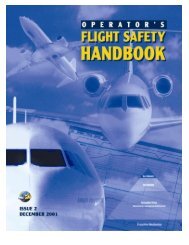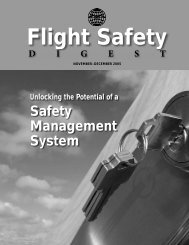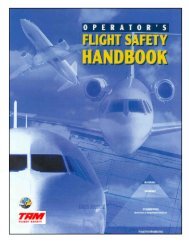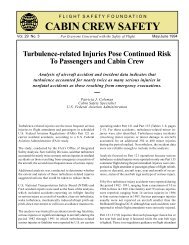Download PDF [10.9 MB] - Flight Safety Foundation
Download PDF [10.9 MB] - Flight Safety Foundation
Download PDF [10.9 MB] - Flight Safety Foundation
Create successful ePaper yourself
Turn your PDF publications into a flip-book with our unique Google optimized e-Paper software.
CAUSALFACTORS<br />
FAA and EASA<br />
certification<br />
requirements … are<br />
less stringent than<br />
equivalent military<br />
requirements.<br />
In addition, the report said, “the forward<br />
deflection of the cyclic, leading to a low-g flight<br />
condition, could explain the rapid roll, but only<br />
if the witnesses were mistaken and the roll was,<br />
in fact, to the right.”<br />
The report also cited previous studies,<br />
including a 1996 study by the U.S. National<br />
Transportation <strong>Safety</strong> Board (NTSB), that linked<br />
“large, abrupt control inputs” to mast bumping. 1<br />
NTSB Study<br />
The report noted the NTSB’s 1996 recommendation<br />
calling on the FAA to require helicopter<br />
manufacturers to “provide data on the response<br />
of helicopters to large, abrupt cyclic inputs as a<br />
part of the certification process.”<br />
The FAA implemented part of the recommendation<br />
by modifying Advisory Circular<br />
(AC) 27.661, Rotorblade Clearance, to require<br />
manufacturers to conduct a blade flapping<br />
survey.<br />
“However, the AC did not define what the<br />
control deflections should be or what the rate of<br />
input should be,” the AAIB report said. “It specified<br />
that margins should be determined, but it<br />
did not specify what the margins should be.”<br />
The NTSB eventually closed out the recommendation<br />
and characterized the FAA’s response<br />
as “acceptable,” but the AAIB said that the NTSB<br />
action was influenced by the decline in the<br />
number of accidents involving main rotor loss of<br />
control in the mid-1990s.<br />
“The NTSB attributed this to the increased<br />
training and experience requirements imposed<br />
by the FAA,” the report said. “However, since<br />
the 1996 NTSB study, there have been at least a<br />
further 16 fatal R22 accidents involving loss of<br />
main rotor control.”<br />
Precise causes of many of these accidents<br />
have been difficult to determine, the report said,<br />
“because the pilot’s control inputs leading up to<br />
the divergence are rarely known.”<br />
Nevertheless, the report added that some of<br />
the 16 accidents probably resulted from a loss<br />
of rotor rpm that followed a power loss “without<br />
the pilot lowering the collective quickly<br />
enough. In the R22, the pilot must react to a loss<br />
of power by lowering the collective in less than<br />
about 1.5 seconds in the cruise, or one second in<br />
the climb, to prevent rotor stall.”<br />
As a result, EASA has begun a study of the<br />
effect of increasing the required reaction times,<br />
the report said.<br />
Handling Qualities<br />
The report said that handling qualities are<br />
another probable factor in a number of R22<br />
crashes involving loss of main rotor control.<br />
“Only light control forces are required to<br />
apply full cyclic deflection in the R22, making<br />
it easy inadvertently to enter a low-g situation<br />
or to make an abrupt and rapid control input<br />
leading to rotor stall and mast bumping,” the<br />
report said.<br />
FAA and EASA certification requirements,<br />
which have changed little in recent decades, are<br />
less stringent than equivalent military requirements,<br />
the report said.<br />
The document noted that a 2005 study by<br />
the U.S. National Aeronautics and Space Administration<br />
Ames Research Center included a<br />
recommendation calling on helicopter manufacturers<br />
to “explore the feasibility of designing<br />
a low-cost, lightweight stability augmentation<br />
system, which would also provide benefits for<br />
the reduction of low-speed and hovering helicopter<br />
accidents.”<br />
In addition, the AAIB report said that a<br />
stability augmentation system “would provide<br />
some control force feedback, thereby making<br />
large abrupt cyclic inputs less likely, as well as<br />
recovering the aircraft to a safe attitude should<br />
the pilot release the cyclic control.”<br />
<strong>Safety</strong> Notices<br />
Robinson Helicopters included a series of safety<br />
notices in the R22 Pilot’s Operating Handbook<br />
that discussed, among other topics, the dangers<br />
of failing to maintain rotor rpm and the importance<br />
of avoiding a rotor rpm stall.<br />
“As the rpm of the rotor gets lower, the<br />
angle-of-attack of the rotor blades must be<br />
higher to generate the lift required to support<br />
the weight of the helicopter,” one safety notice<br />
36 | FLIGHT SAFETY FOUNDATION | AEROSAFETYWORLD | MAY 2013


![Download PDF [10.9 MB] - Flight Safety Foundation](https://img.yumpu.com/18550968/38/500x640/download-pdf-109-mb-flight-safety-foundation.jpg)

![Download this Issue [PDF 7 MB] - Flight Safety Foundation](https://img.yumpu.com/18859635/1/190x245/download-this-issue-pdf-7-mb-flight-safety-foundation.jpg?quality=85)
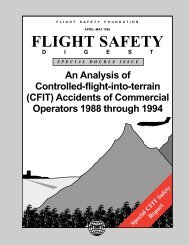
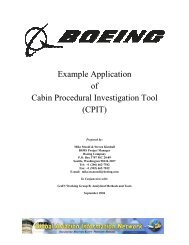
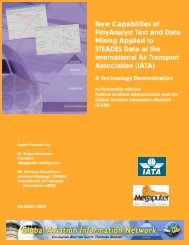
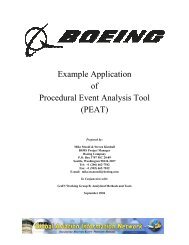

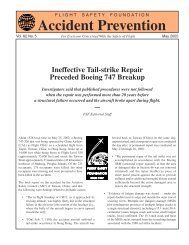
![Download [PDF 8 MB] - Flight Safety Foundation](https://img.yumpu.com/18859366/1/190x245/download-pdf-8-mb-flight-safety-foundation.jpg?quality=85)
